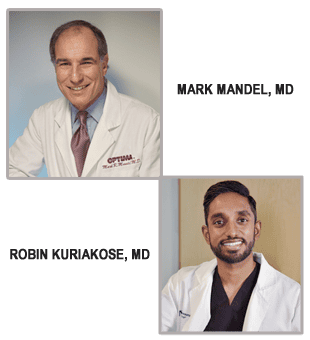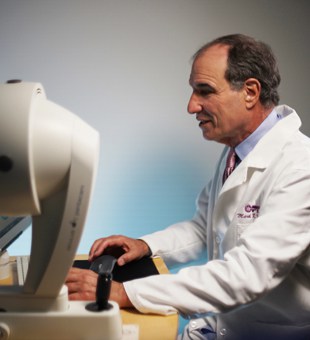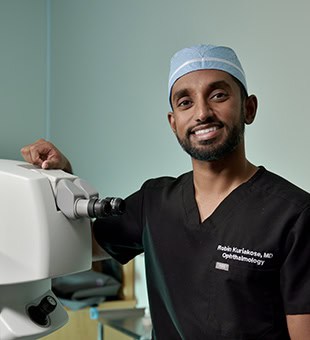Offices in Hayward, Castro Valley & San Jose

Modern cataract surgery involves removing this clouded lens and replacing it with an artificial lens called a lens implant. Exactly the same operation can be done when the lens is not clouded in order to change the power of the lens as a way to correct farsightedness with or without associated astigmatism. This is called Refractive Lens Replacement also known as custom lens replacement.
For a relatively high amount of farsightedness (hyperopia) refractive lens replacement is, in our opinion, the only good surgical choice at this point in time. Depending on individual considerations, it may be the best procedure for any degree of hyperopia and astigmatism. Refractive lens replacement / custom lens replacement is less likely to produce side effects such as starburst, glare, halos, and decreased night vision than any of the corneal procedures. Most patients have none of these side effects after refractive lens replacement, but they remain possibilities… especially if a multifocal IOL (lens) is inserted at the time of surgery.
Since refractive lens replacement requires surgery inside the eye and not just on the cornea, it can be associated with some potentially severe complications which are rarely if ever seen following any of the procedures that only involve the cornea (e.g., LASIK or PRK).
These include, but are not limited to:
- Infection inside the eye (endophthalmitis). We estimate the probability of this to be less than 1 in 3,000, but if it occurs it is very serious and can cause loss of vision or blindness if unsuccessfully treated.
- Retinal detachment. We estimate the probability of this to be about 1 in 1,000 cases in hyperopic patients, but considerably more likely in myopes and especially high myopes where it may reach a likelihood of as high as 4 to 5 in 100. Retinal detachments tend to occur in high myopes even if they have no surgery. The probability of retinal detachment increases if a capsulotomy (see “6” below) is needed. A capsulotomy is necessary in 30% to 50% of young patients who undergo lens replacement. Some retinal detachments can be successfully treated, but not all, and this can result in severe loss of vision or blindness.
- Cystoid Macular Edema. This is a swelling in the layers of the center part of the retina that can occur after any type of surgery inside the eye, including refractive lens replacement. It seems more likely with increasing age. It may occur to some degree in several out of every 1,000 eyes. Fortunately it usually gets better with time, but it can delay the return of good vision and sometimes does not get better and can result in permanent decreased vision.
- Damage to the iris or pupil. This is not likely, but can occur. It if does, it can interfere with the best possible vision, and produce severe glare, light sensitivity, and a cosmetically displeasing appearance to the eye.
- Eye pressure. There is commonly some fluctuation of the eye pressure following refractive lens replacement in the first few days or weeks following surgery. Rarely the pressure can remain elevated and result in the eye condition called “glaucoma.”
- Need for capsulotomy. In about 1 out of 3 eyes following refractive lens replacement the “capsule” behind the implant becomes clouded to some degree. This is usually very easy to correct using the YAG laser, but having the capsule opened is felt to increase the risk of cystoid macular edema and retinal detachment.
- Effect on accommodation. (See “Presbyopia” section). The ability to focus at different distances automatically in young people is done by the natural lens of the eye. Following refractive lens replacement, this ability is gone and the resulting effect must be understood. In patients near or over 40, this changing focus ability is already decreased or lost and is not generally much of an issue. It is, however, an important consideration, especially in younger people. This surgery creates “instant presbyopia” and unless it is compensated for by monovision the implantation of a multifocal implant, there will be a need to use glasses for near tasks such as reading. If you are a candidate for Refractive Lensectomy, you will be given a separate booklet to study.
Schedule a Consultation Today
During a comprehensive consultation, Your surgeon will go over all of the details of the refractive lens exchange procedure, including the risks and benefits, and he can answer any questions you may have. If you are considering refractive lensectomy, consult with the professional eye surgeons at OPTIMA Ophthalmic Medical Associates. Call us today at 510-886-3937.




